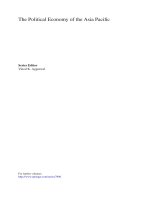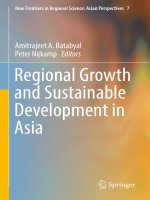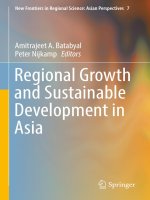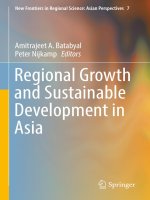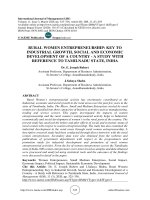Economic growth and economic development 212
Bạn đang xem bản rút gọn của tài liệu. Xem và tải ngay bản đầy đủ của tài liệu tại đây (41.26 KB, 1 trang )
Introduction to Modern Economic Growth
suffrage, something that did not arrive in Britain itself until 1919. Another telling
example is that of the Puritan colony in Providence Island in the Caribbean. While
the Puritan values are often credited with the arrival of democracy and equality of
opportunity in Northeastern United States, the Puritan colony in Providence Island
quickly became just like any other Caribbean slave colony despite its Puritanical
inheritance.
Similarly, even though the 17th century Dutch had perhaps the best domestic
economic institutions in the world, their colonies in South-East Asia ended up with
institutions designed for the extraction of resources, providing little economic or
civil rights to the indigenous population. These colonies consequently experienced
slow growth relative to other countries.
To emphasize that the culture or the religion of the colonizer was not at the
root of the divergent economic performances of the colonies, Figure 4.13 shows
the reversal among the British colonies (with population density in 1500 on the
horizontal axis). Just as in Figure 4.6, there is a strong negative relationship between
population density in 1500 and income per capita today.
With respect to the role of Europeans, Singapore and Hong Kong are now two of
the richest countries in the world, despite having negligible numbers of Europeans.
Moreover, Argentina and Uruguay have as high proportions of people of European
descent as the United States and Canada, but are much less rich. To further document this, Figure 4.14 shows a pattern similar to the Reversal of Fortune, but now
among countries where the fraction of those of European descent in 1975 is less than
5 percent of the population–thus a sample of countries in which European values
or culture cannot have much direct effect today.
Overall, the evidence is not consistent with a major role of geography, religion
or culture transmitted by the identity of the colonizer or the presence of Europeans.
Instead, differences in economic institutions appear to be the robust causal factor
underlying the differences in income per capita across countries. Institutions therefore appear to be the most important fundamental cause of income differences and
long-run growth.
198



